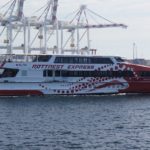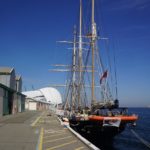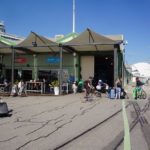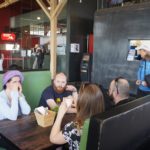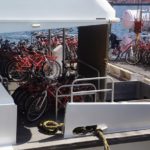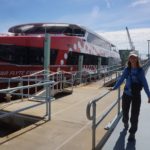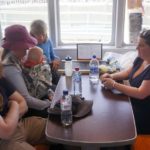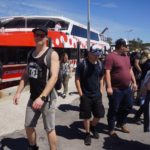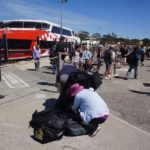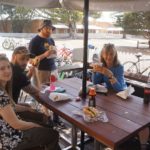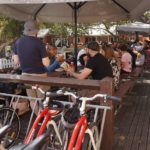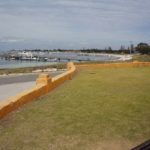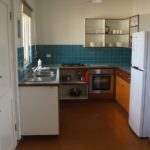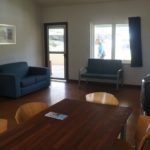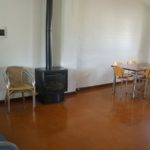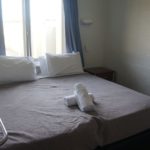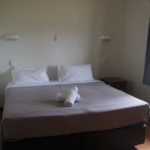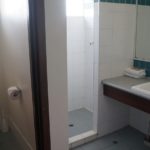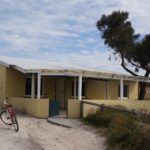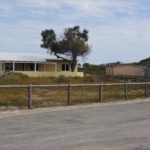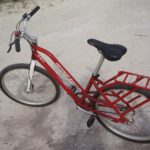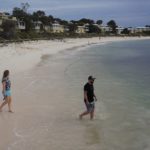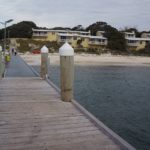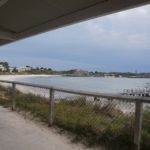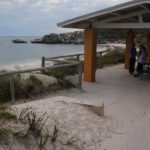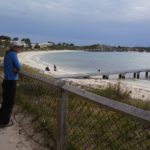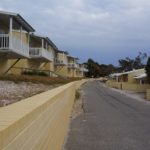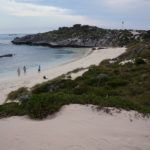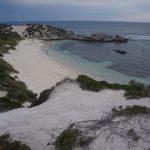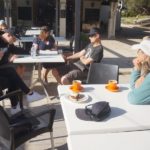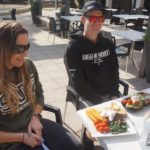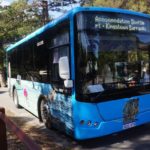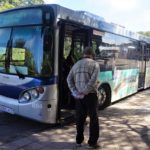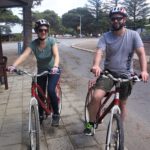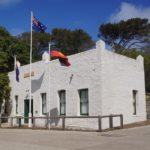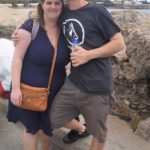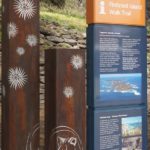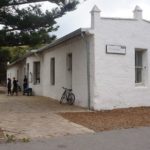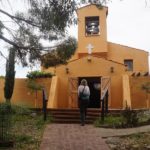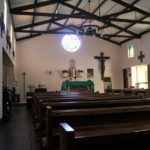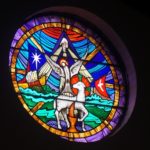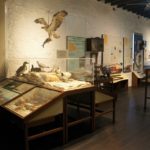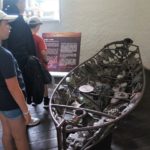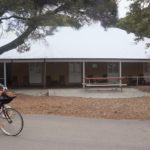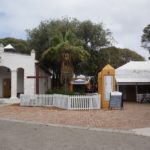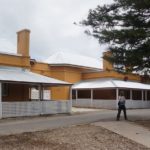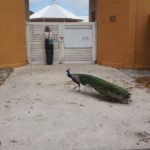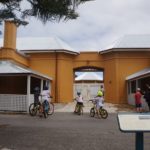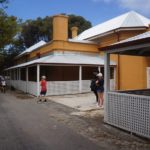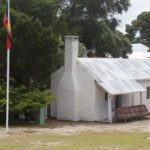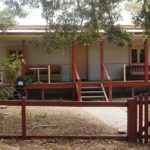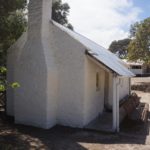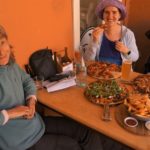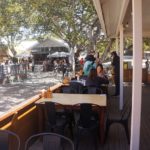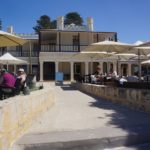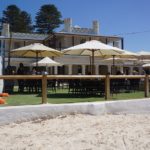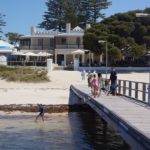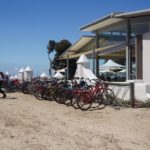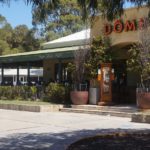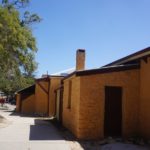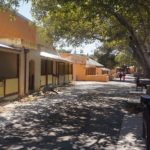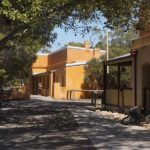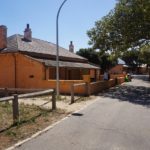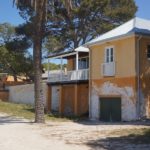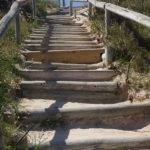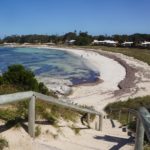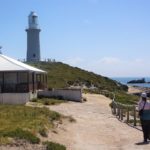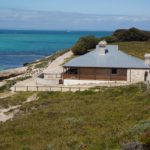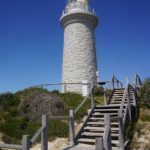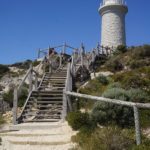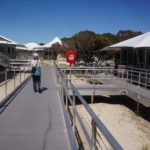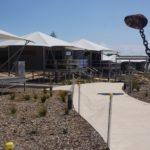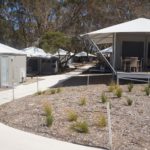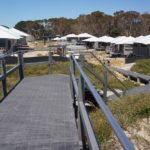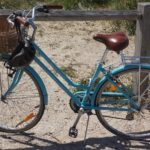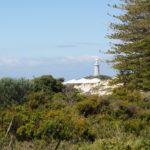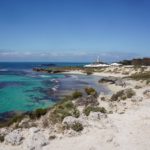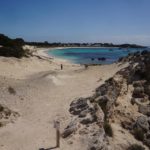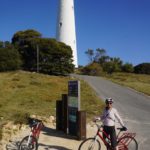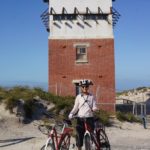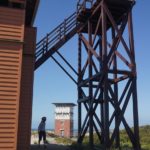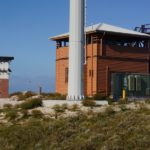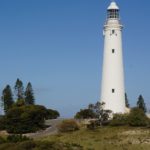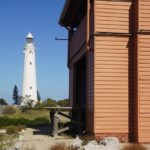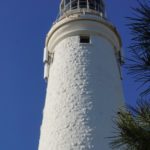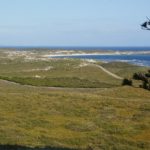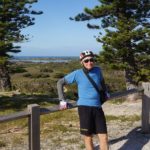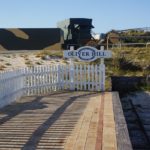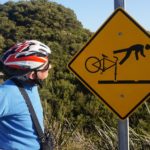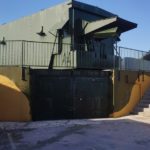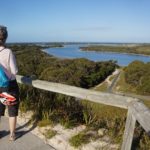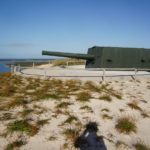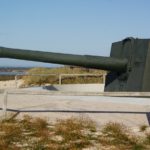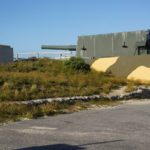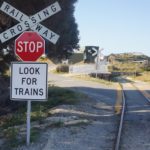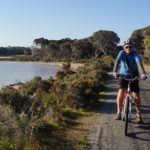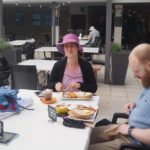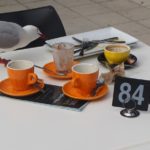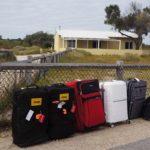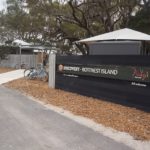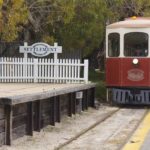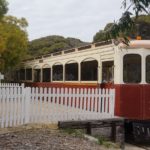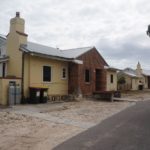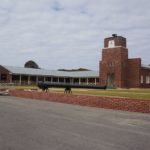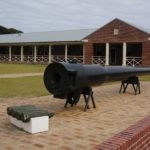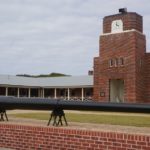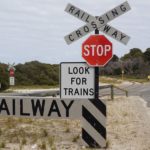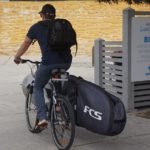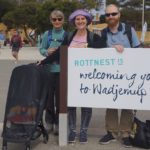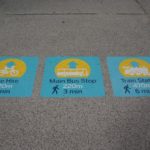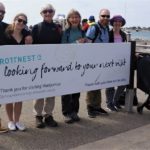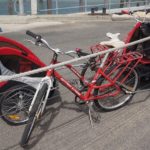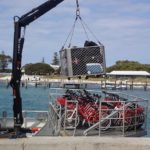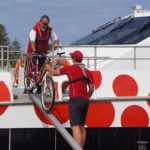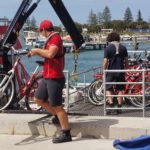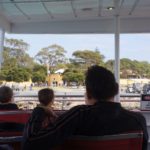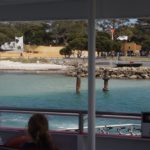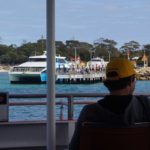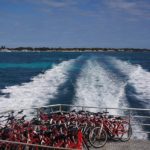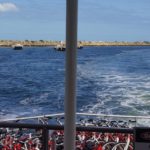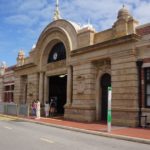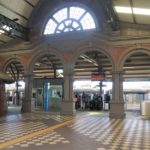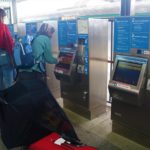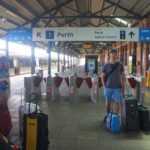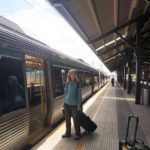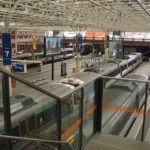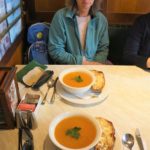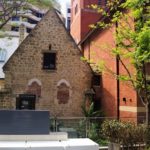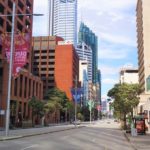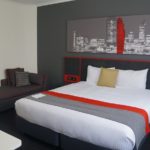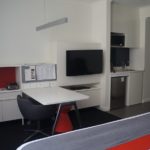We did not have any internet on Rottnest Island, hence no posts for a few days.
I won’t post any photos of the wedding as Simon and Dez can decide which ones they want to go out into the public domain when they get their “official” photos from the wedding photographer.
We arrived on the island on Thursday morning and it was sunny and very hot. In the evening the weather deteriorated and overnight it rained. Wedding Day Friday started out cloudy and windy and it deteriorated during the morning until it was gale winds and heavy showers of rain. So much for a beach wedding at Fay’s Bay. The wedding planner was earning her fee as plans were revised from an exposed beach to a sheltered beach, then a sheltered verandah and finally inside in an historic cottage. Dez and Simon were fantastic, they were the most cool, calm and collected, just going with the flow while everyone else was losing their minds. The late ferries back to Freemantle were cancelled due to the weather and so some had to leave a little earlier than they wanted to. It was a lovely wedding, we all enjoyed ourselves and Dez and Simon were very happy.
Wouldn’t you know it the next day was warm and sunny although still a bit windy. All our immediate family were on Rottnest, Barbara and I, Clare and Dave and baby Andrew, Susan and Mike, in a 3 bedroom chalet at Geordies Bay and Dez and Simon in a “honeymoon” chalet about a hundred metres away in Longreach Bay.
Rottnest Island (also known as Wadjemup, and Rotto by locals) is 18 km off the coast of Freemantle WA – a 30 minute ride on the ferry. It is a sandy, low lying, limestone island, a nature reserve, and is 11km long, 4.5km at its widest and the highest point is 50 metres above sea level. There is no private ownership or leasing of land. It is administered by the Rottnest Island Authority under its own act of parliament. It has a permanent population of about 300 but 500,000 visitors a year and up to 20,000 on a busy day in summer. There are no private vehicles just a few service and emergency vehicles used by the Authority, but the roads are excellent. There is a good bus service, a one carriage train, a small landing strip and almost everyone brings their own, or hires a bicycle. It is wonderful cycling, dozens of beautiful bays and beaches, inland salt lakes, no hills of any significance, no vehicle traffic and many, many kilometres of smooth sealed roads. There are hundreds of chalets for accommodating 5,500 visitors, quite a large settlement at Thomson Bay (where the ferry jetty is) with stores, cafes, restaurants, etc. There is a good grocery store and excellent café where we stayed in Geordie Bay.
There were no inhabitants when Europeans arrived but Rottnest had been inhabited by aborigines from 6,500 to about 50,000 years ago. The island has an interesting history of salt harvesting from the salt lakes, an aboriginal prison, a reformatory for boys, an internment camp in WWI and WWII, a military installation of 9 inch and 6.2 inch guns in WWII and Battery Observation Post (BOP) and Signals Building to co-ordinate the aiming and firing of the guns. Today the island is largely devoted to recreational use with swimming, fishing, snorkelling, surfing, kayaking, sky diving, use a Skegway, tours of historic and military buildings, weddings etc.
Rottnest is known for its population of Quokkas, a small native marsupial found in few other locations. The island’s name comes from the Dutch for “Rats’ Nest Island” after the quokkas. On the way over from Freemantle to the island our ferry stopped so we could observe some humpback whales and dolphins. The whales migrate up and down the West Australia coast.
We loved our time on the island. Just enough things of interest to see and explore and it is very, very relaxed. A large part of the laid back feeling comes from there being no vehicular traffic. Everyone walks, cycles or takes the bus.
- The Rottnest Express ferry, Freemantle
- Tall ship, Freemantle
- Ferry terminal Freemantle
- Waiting to borard, Clare, Dave, Susan, Mike, Barbara
- Hire bikes on board the ferry
- Boarding the Rottnest Express in Freemantle
- On the Rottnest Express, Dave, Clare and Andrew, Barbara and Dez
- Landing at Rottnest Island, Simon and Hayden
- Landing at Rottnest Island
- Lunch at Thomson Bay, Susan, Mike, Dave, Barbara, Clare and Andrew
- The Settlement, Thomson Bay
- Thomson Bay
- Our chalet, Geordie Bay
- Our chalet, Geordie Bay
- Our chalet, Geordie Bay
- Our chalet, Geordie Bay
- Our chalet, Geordie Bay
- Our chalet, Geordie Bay
- Our chalet, Geordie Bay
- Our chalet, Geordie Bay
- Our chalet, Geordie Bay
- Hire bike
- Geordie Bay
- Geordie Bay
- Geordie Bay
- Geordie Bay
- Geordie Bay
- Chalets Geordie bay
- Geordie Bay Cafe
- Fays Bay
- Fays Bay
- Sarah, Hayden, Dez, Simon, Barbara, hung over?
- Sarah and Hayden breakfast at Geordie Cafe
- Accommodation Shuttle
- Island bus
- Susan and Mike on hire bikes
- The Salt Store, Thomson Bay
- Dez and Simon
- Visitor Centre, Thomson Bay
- Signage, Thomson Bay
- The Museum, Thomson Bay
- The Catholic Chapel
- The Catholic Chapel
- The Catholic Chapel
- The Museum, Thomson Bay
- The Museum, Thomson Bay
- Historic Building, Thomson Bay
- The Anglican Chapel
- The Anglican Chapel
- Historic building, Thomson Bay
- Historic building, Thomson Bay
- Barbara and a friend
- The Quod, former aborigine prison
- Historic building, Thomson Bay
- Historic building, Thomson Bay
- Lomas Cottage also known as Buckingham Palace
- Pizza for Barbara and Clare’s lunch
- The Settlement, Thomson Bay
- Former Governor’s House, Thomson Bay
- Former Governor’s House, Thomson Bay
- Former Governor’s House, Thomson Bay
- Thomson Bay
- Dome Restaurant, Thomson Bay
- Historic buildings, Thomson Bay
- Historic buildings, Thomson Bay
- Historic buildings, Thomson Bay
- Historic buildings, Thomson Bay
- Historic buildings, Thomson Bay
- Historic buildings, Thomson Bay
- Historic buildings, Thomson Bay
- Steps Thomson Bay
- Thomson Bay
- Bathurst Lighthouse
- Cottage, Bathurst Lighthouse
- Pinky Bay
- Bathurst Lighthouse
- Bathurst Lighthouse
- Discovery Eco Village, Pinky Beach
- Discovery Eco Village, Pinky Beach
- Discovery Eco Village, Pinky Beach
- Discovery Eco Village, Pinky Beach
- Pinky Beach
- Hire cycle, Pinky Beach
- Bathurst Lighthouse
- Pinky Beach
- Longreach Bay
- Beautiful peaceful cycling
- Wadjemup Lighthouse
- Signal Building
- Signal Building
- Signal Building
- Wadjemup Lighthouse
- Wadjemup Lighthouse
- Wadjemup Lighthouse
- View from Wadjemup Lighthouse
- Paul at Wadjemup Lighthouse
- Wadjemup Lighthouse
- Oliver Hill 9 inch gun
- Take care Paul
- Oliver Hill 9 inch gun
- View from Oliver Hill
- Oliver Hill 9 inch gun
- Oliver Hill 9 inch gun
- Oliver Hill 9 inch gun
- End of the train line at Oliver Hill Guns
- Cycling by one of the salt lakes
- Clare and Dave at Breakfast, Geordie Cafe
- Dam gulls
- Our bags ready to be collected and delivered to the ferry
- Discovery Eco Village, Pinky Beach
- The train
- The train
- Historic cottages, Kingstown
- Kingstown Barracks
- Kingstown Barracks
- Kingstown Barracks
- STOP
- Cycling surfer
- Andrew, Barbara, Clare, Dave
- Signage on path
- Mike, Susan, Paul, Barbara, Dave, Clare and Andrew in buggy
- Hire bikes of all sorts
- Loading luggage onto the ferry
- Unloading bikes from the ferry
- Unloading bikes from the ferry
- Leaving Rottnest Island
- Leaving Rottnest Island
- Leaving Rottnest Island
- Leaving Rottnest Island
- Approaching Freemantle
- Freemantle Railway station
- Freemantle Railway station
- Freemantle Railway station
- Freemantle Railway station
- Freemantle Railway station
- Perth Railway Station
- Perth
- Looking for our hotel
- Pumpkin soup for lunch
- Perth
- Perth
- Citadines Hotel
- Citadines Hotel

